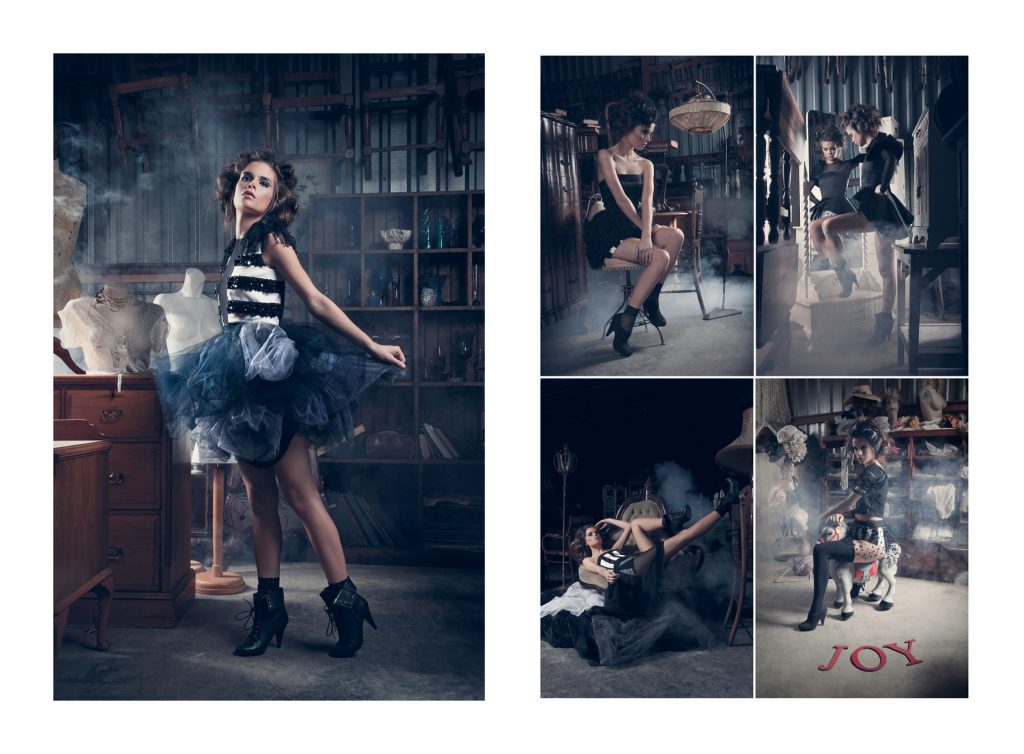Fashion Photography | Overview of Genres
Fashion Photography is a genre of photography devoted to the display of clothing, fashion accessories and beauty products as seen in advertisements or fashion magazines. Commercial fashion photography can be broken down into various sub-genres, depending on the purpose of the marketing. These include advertising campaigns, lookbooks, catalogue, editorials and now also the fashion film. In this article we will explain each category and its applications. Ideally, you should have all of these marketing materials available to promote your brand.
Fashion Campaign
High fashion campaigns are more interested in selling the image of the brand, than a specific product. Or the mood of your latest range, rather than a particular item of clothing. These will be your hero images to be used as print advertisements on billboards, in fashion magazines, as in-store point-of-sale and so on. Off course, these images could (and probably should) also be applied to your company’s website landing page and social media headers. This will help tie the campaign together to build your brand identity across platforms.
Often related to haute couture ranges, shoots of this nature should be built around strong concepts, with creative styling and make-up, and complex lighting set-ups that builds on the narrative. This type of high-end advertising is intended to create brand awareness by cutting through the visual clutter of contemporary (predominantly online) media to confirm a more sophisticated position in the industry.

Lookbook Photography
Now that you have attracted attention to your brand, you need promotional tools to sell your products. A lookbook is used by the designer to showcase their work to wholesale buyers. You should focus on buyers who represent the stores you would like to retail in. A good lookbook will demonstrate the product in action. It should convey the lifestyle of the intended user to appeal to your target market. Ideally, each new range will be represented in a lookbook. This will serve as a style guide to provide both inspiration for assembling looks, as well as information on the products.
The lighting, styling and background should be consistent throughout the lookbook. Although props may be used to help convey the concept, the images and layout should still be clean and simple as not to distract from the fashion itself. Extracts from your lookbook can also be used as content for your social media feeds.

Catalogue Photography
The main difference between lookbooks and catalogues is that the first is intended for wholesale, while the latter is focused on retail. A catalogue of product photography is where end user customers see what a certain store is selling. This is also applicable to the designer’s own online store.
Product photography of fashion items comes with various options in itself. These include showcasing the items on a model or mannequin, or opting for the ghost-mannequin or lay-flat techniques. We will be writing an article explaining these options in more detail soon. In the interim, it is important to know that once you have decided on a look, it is best to follow through with that decision for future shoots to retain consistency within your brand.
Product photography is more often than not shot on a clean, white background; although exceptions can be made based on brand identity. Garments should be showcased from various angles, including front, 45º and back views. These images will be used alongside information like availability, sizes, colours, and, of course, price.
Clean product shots can also be used in combination with details or lookbook concept images for added visual impact. And again, they could also be used in your social feeds to direct customers to new products available in stores.

Editorial / Webitorial
An editorial refers to a photo-story in a magazine that is commissioned and directed by the fashion editor themed around a particular style for that season. These stories often depict contemporary fashion trends set in the situation the clothing would be worn in. An editorial will have continuity in its design, laid out in spreads over 6-12 pages.
It is good to know that some magazines accept submissions for publication. However, these often require that more than one designer be showcased in the collection. Collaborating with other designers who compliment your work could be beneficial to all parties if selected for publication. This could be a valuable tool for reaching new audiences and is certainly worth considering.

Fashion Film
The latest evolution in marketing fashion brands is the fashion short film. Whether it be a 3-second cinemagraph or 2-minute short film, moving images are the new big thing! Taking on a similar role to the editorial, the narrative behind your range can now be brought to life through motion. Making it the perfect accompaniment to your printed marketing materials. These shorts can also be very impactful in the constant feed of images we are inundated with daily.
Not sure where to start? At Field Photography we offer a set of fashion photography and design services to assist your brand. From conceptualisation to photography and retouching, all the way through to graphic design we work to get your campaign print and web ready. Whether it be an advertising campaign, lookbook, catalogue, editorial or fashion film you are after, allow us to assist you with doing what we do best: showcasing what you do best. Contact Us.





